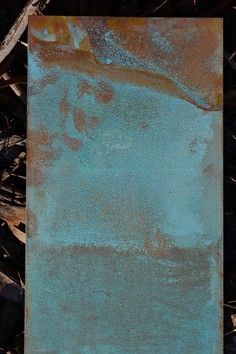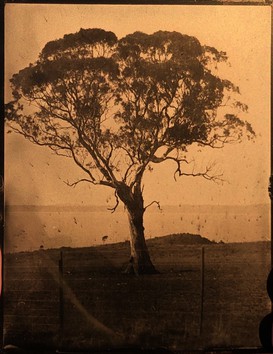Hannah Cooper
Warping the weft
5 jul. — 10 aug. 2024
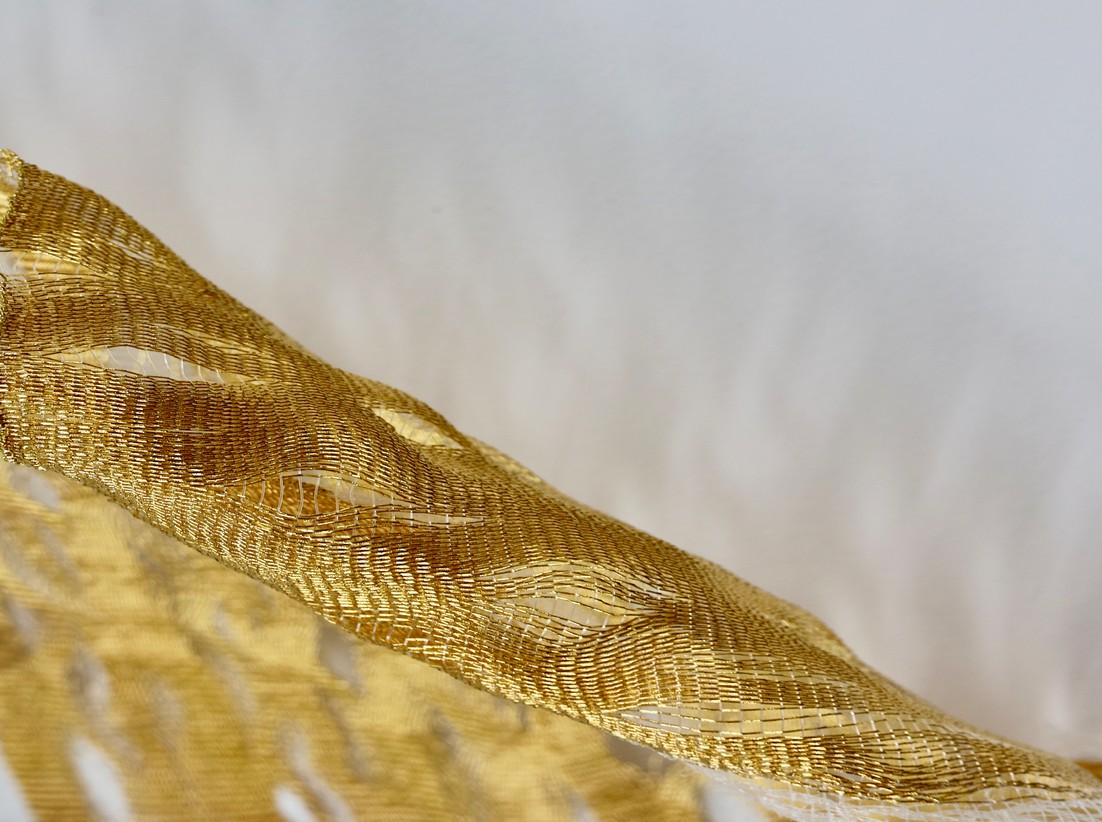
5 jul. — 10 aug. 2024
Hannah Cooper
Image: Hannah Cooper, Warping the weft 2 (after glass), 2023, fishing line, metallicised nylon thread. Courtesy the artist.
Warping the weft
Image: Hannah Cooper, Warping the weft 2 (after glass), 2023, fishing line, metallicised nylon thread. Courtesy the artist.
Hannah Cooper
Warping the weft
5 jul. — 10 aug. 2024
Hannah Cooper uses traditional cloth-making techniques to produce domestic textiles, a medium ubiquitous in daily human life. People in western society are generally distanced from the process of textile manufacturing. Despite being surrounded by textiles throughout life from birth, and fabric objects featuring in our most sacred and sentimental rituals, textiles are often viewed as being easily produced and replaced.
Much of Cooper’s practice is centred around the ongoing sharing of technique and process, and the incredible slowness, precision, and value in hand weaving. Production of ordinary domestic textiles has influenced the artist’s weaving, which plays with, and resists, the formal language of geometric abstraction and the structural and creative constraints of weaving. While the over-under grid is the basis of all weaving, Hannah Cooper’s work distorts and amplifies this very simple structure: to stay firmly on the grid or move off it.
Referencing the contribution of artists who have previously straddled the line between fine art and craft, Cooper enjoys working in that ambiguous middle ground. By bringing textiles, and specifically woven cloth, into contemporary focus, viewers are encouraged to appreciate the intricate detail and time manifest through material that is inherent in the process of textiles.
-
Appears courtesy of Jennings Kerr - Hannah Cooper is represented by Jennings Kerr.
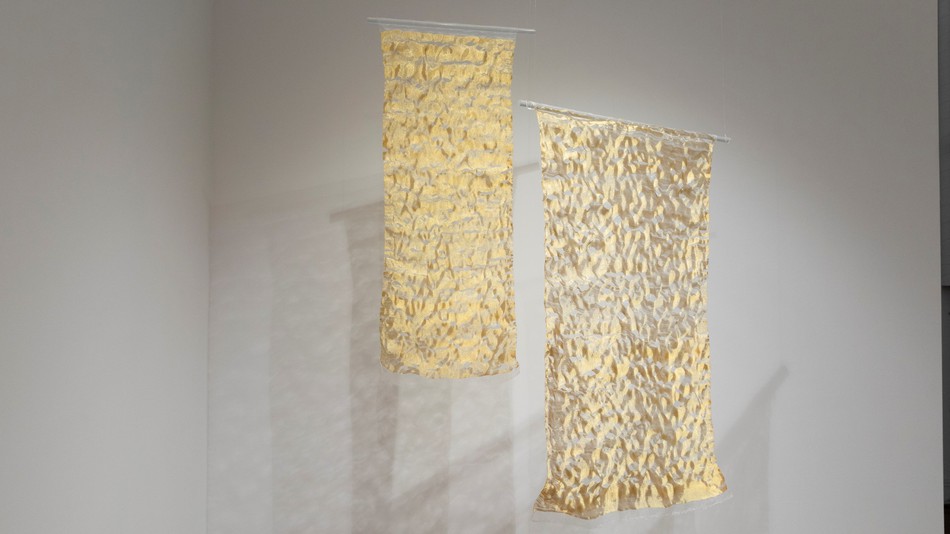

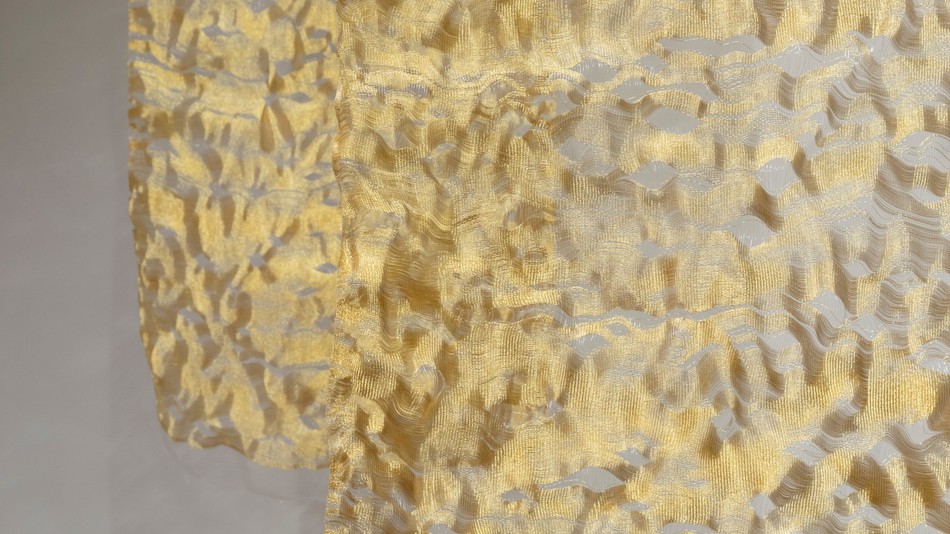
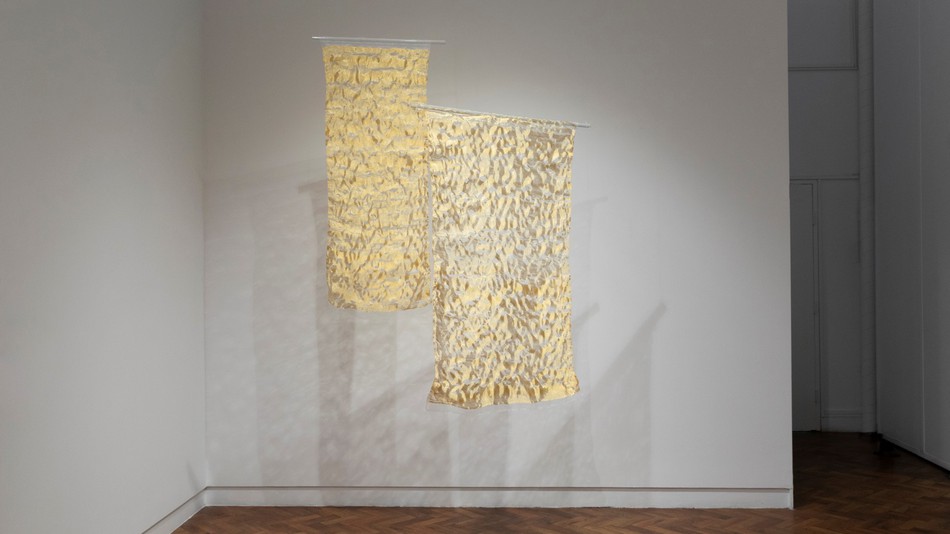
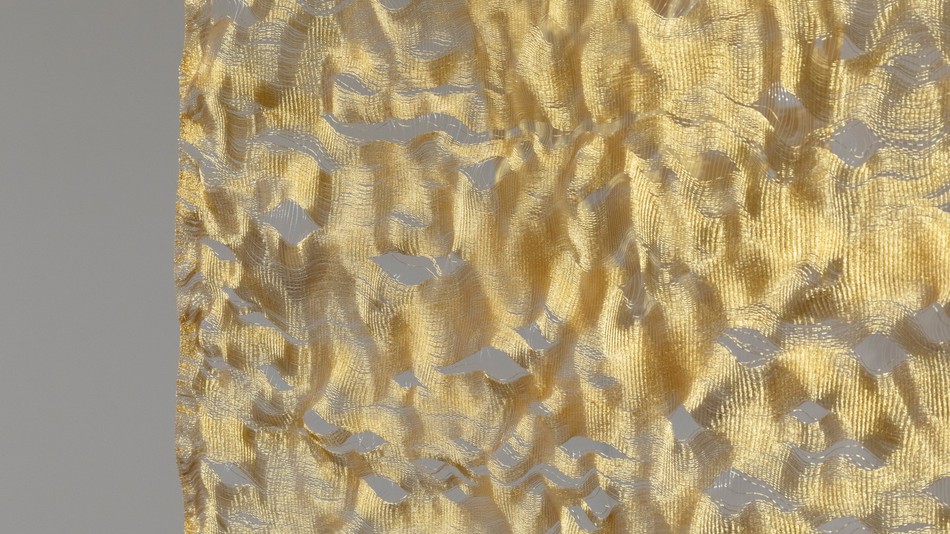
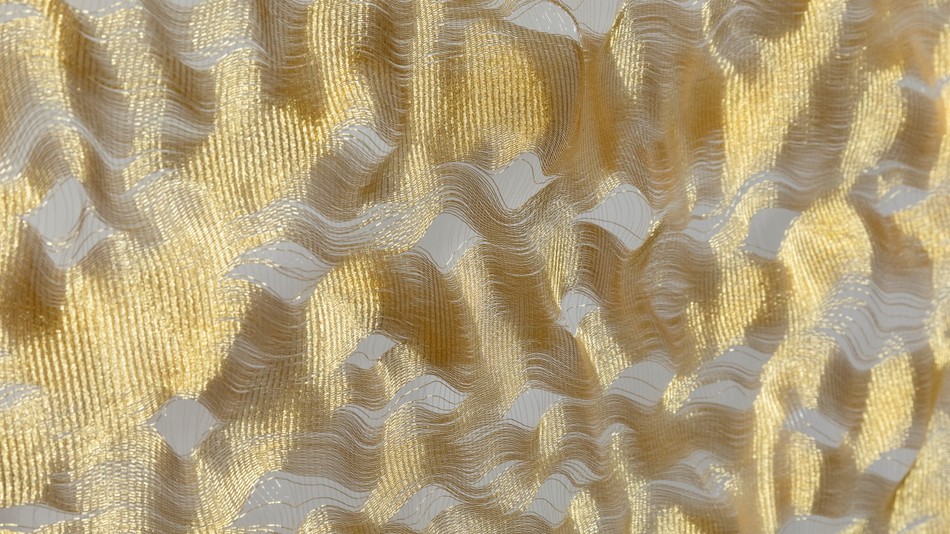
6
Image: Installation view Hannah Cooper Warping teh weft', 2024, courtesy the artist. Photography: Silversalt Photography.
Image: Installation view Hannah Cooper Warping teh weft', 2024, courtesy the artist. Photography: Silversalt Photography.
Image: Installation view Hannah Cooper Warping teh weft', 2024, courtesy the artist. Photography: Silversalt Photography.
Image: Installation view Hannah Cooper Warping teh weft', 2024, courtesy the artist. Photography: Silversalt Photography.
Image: Installation view Hannah Cooper Warping teh weft', 2024, courtesy the artist. Photography: Silversalt Photography.
Image: Installation view Hannah Cooper Warping teh weft', 2024, courtesy the artist. Photography: Silversalt Photography.
Image: Hannah Cooper, Warping the weft 2 (after glass), 2023, fishing line, metallicised nylon thread. Courtesy the artist.
Hannah Cooper
Warping the weft
5 jul. — 10 aug. 2024
Hannah Cooper uses traditional cloth-making techniques to produce domestic textiles, a medium ubiquitous in daily human life. People in western society are generally distanced from the process of textile manufacturing. Despite being surrounded by textiles throughout life from birth, and fabric objects featuring in our most sacred and sentimental rituals, textiles are often viewed as being easily produced and replaced.
Much of Cooper’s practice is centred around the ongoing sharing of technique and process, and the incredible slowness, precision, and value in hand weaving. Production of ordinary domestic textiles has influenced the artist’s weaving, which plays with, and resists, the formal language of geometric abstraction and the structural and creative constraints of weaving. While the over-under grid is the basis of all weaving, Hannah Cooper’s work distorts and amplifies this very simple structure: to stay firmly on the grid or move off it.
Referencing the contribution of artists who have previously straddled the line between fine art and craft, Cooper enjoys working in that ambiguous middle ground. By bringing textiles, and specifically woven cloth, into contemporary focus, viewers are encouraged to appreciate the intricate detail and time manifest through material that is inherent in the process of textiles.
-
Appears courtesy of Jennings Kerr - Hannah Cooper is represented by Jennings Kerr.






6
Image: Installation view Hannah Cooper Warping teh weft', 2024, courtesy the artist. Photography: Silversalt Photography.
Image: Installation view Hannah Cooper Warping teh weft', 2024, courtesy the artist. Photography: Silversalt Photography.
Image: Installation view Hannah Cooper Warping teh weft', 2024, courtesy the artist. Photography: Silversalt Photography.
Image: Installation view Hannah Cooper Warping teh weft', 2024, courtesy the artist. Photography: Silversalt Photography.
Image: Installation view Hannah Cooper Warping teh weft', 2024, courtesy the artist. Photography: Silversalt Photography.
Image: Installation view Hannah Cooper Warping teh weft', 2024, courtesy the artist. Photography: Silversalt Photography.
